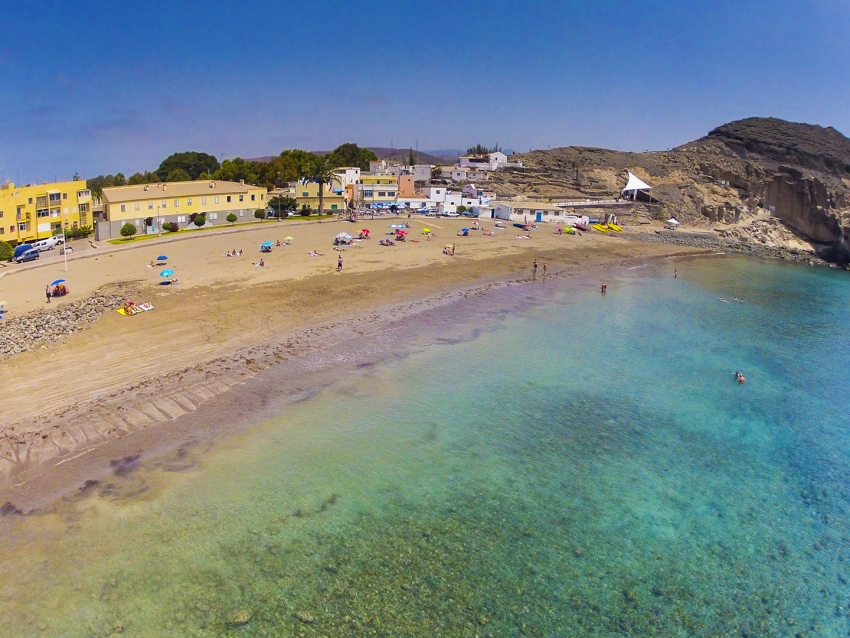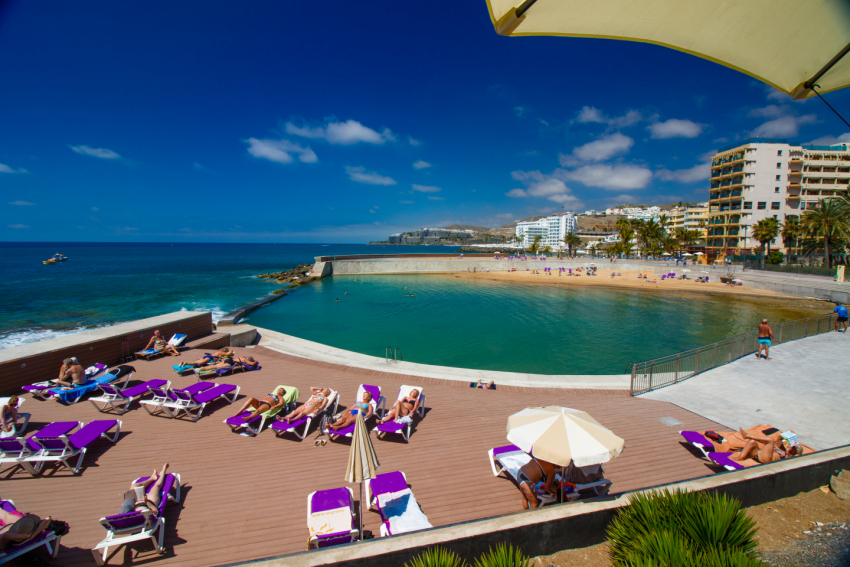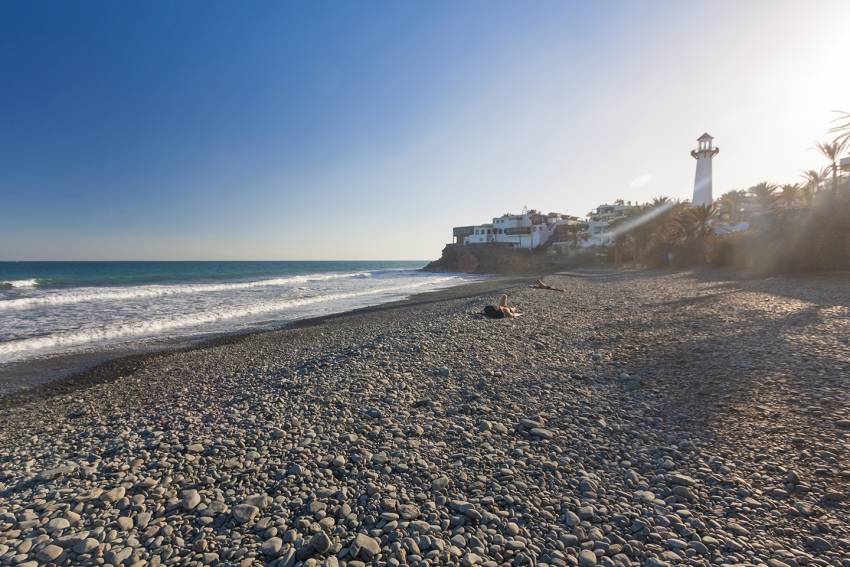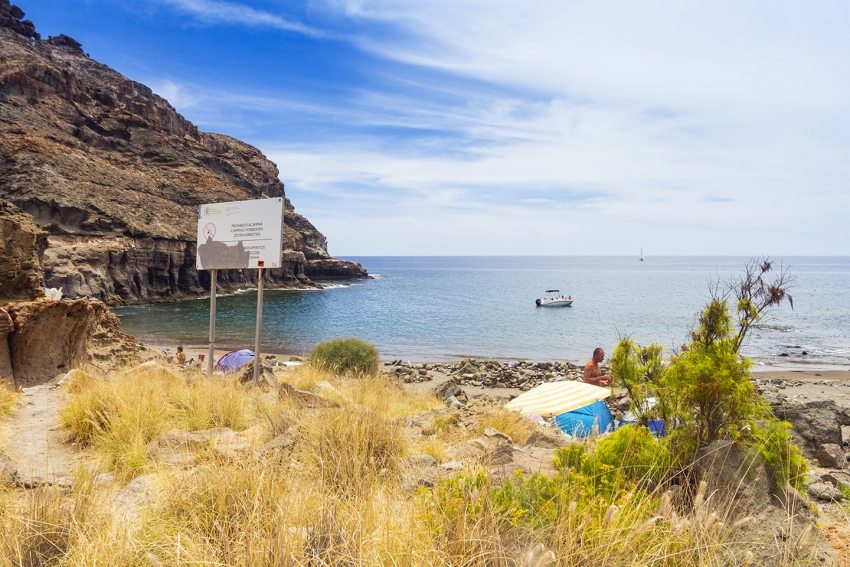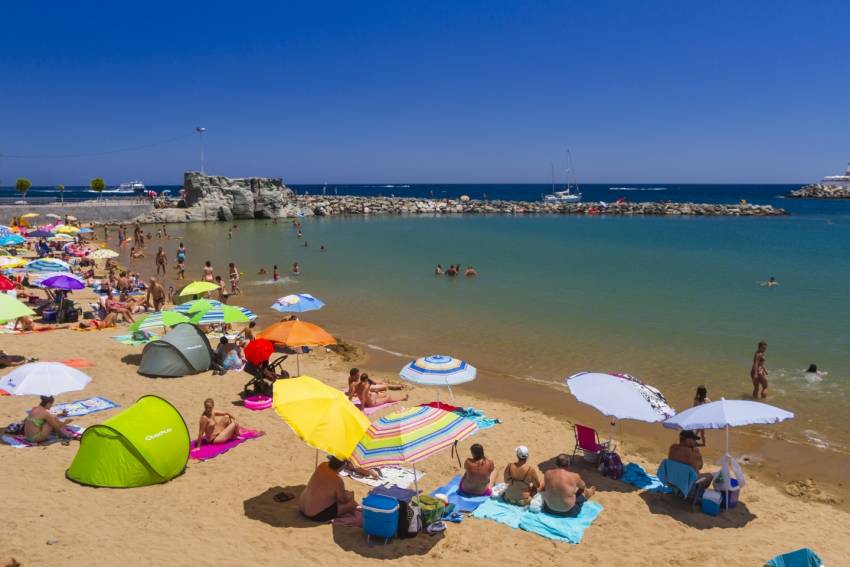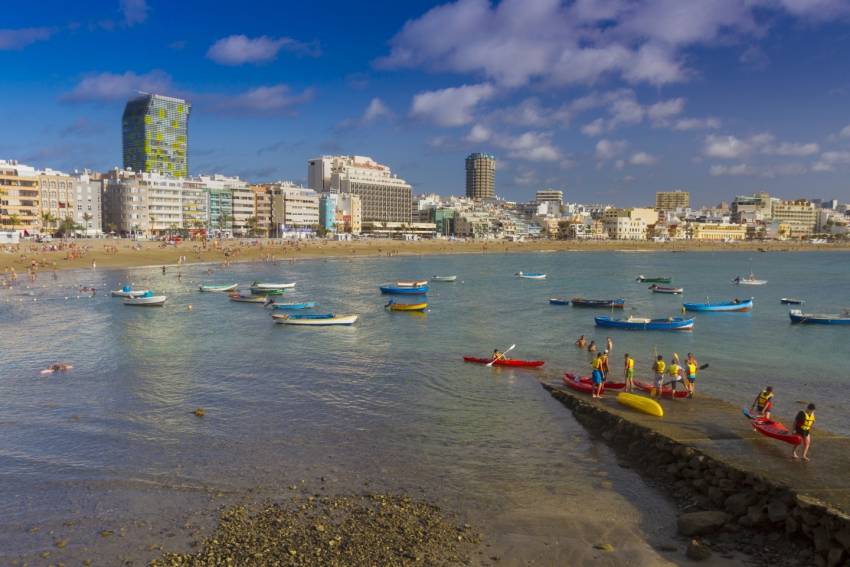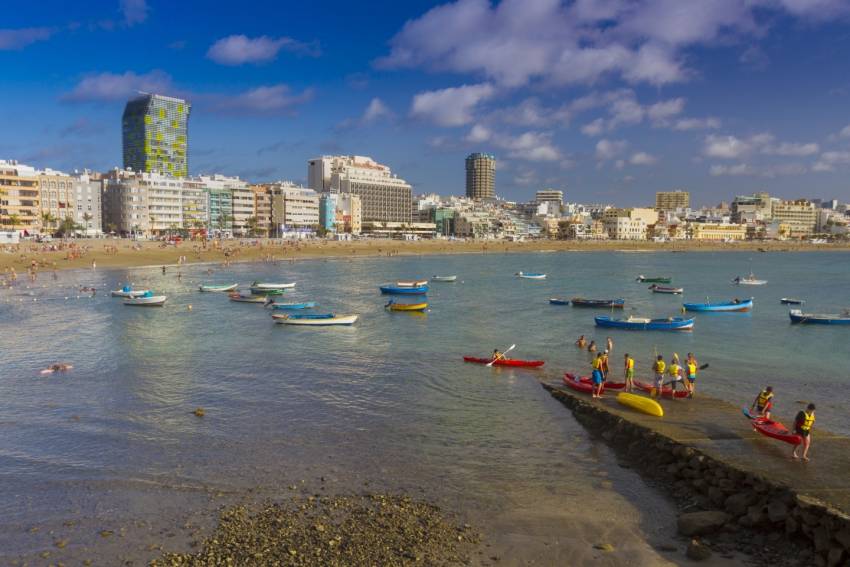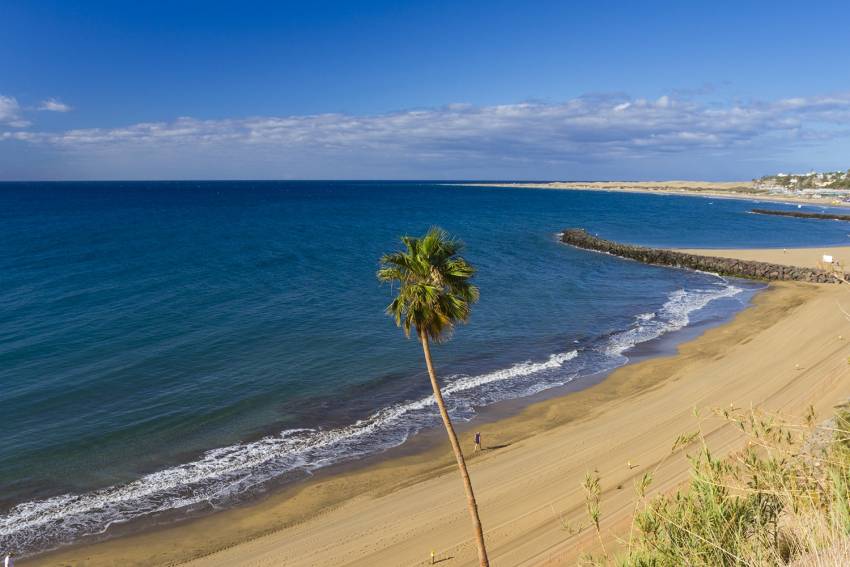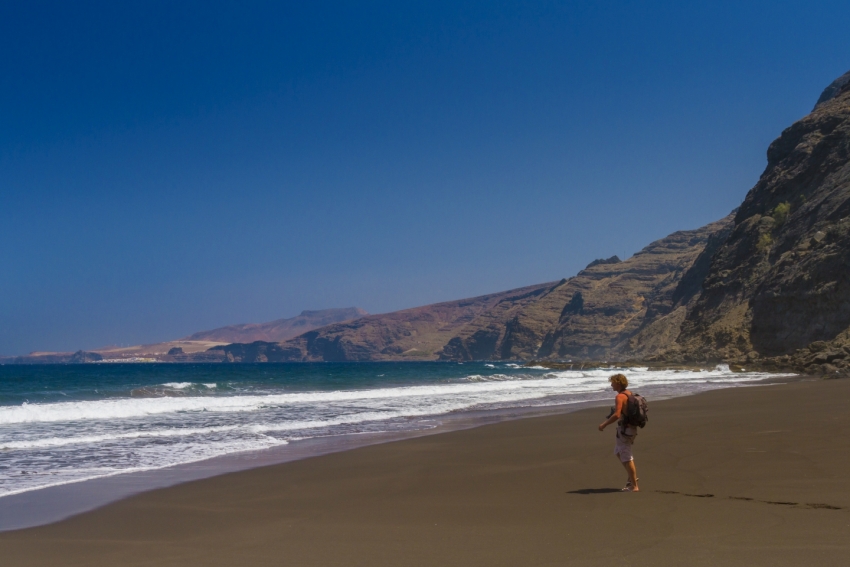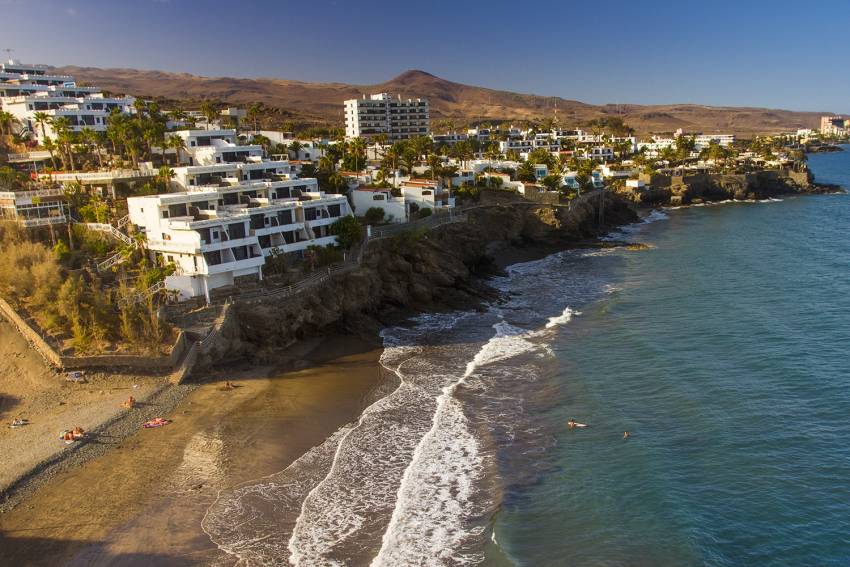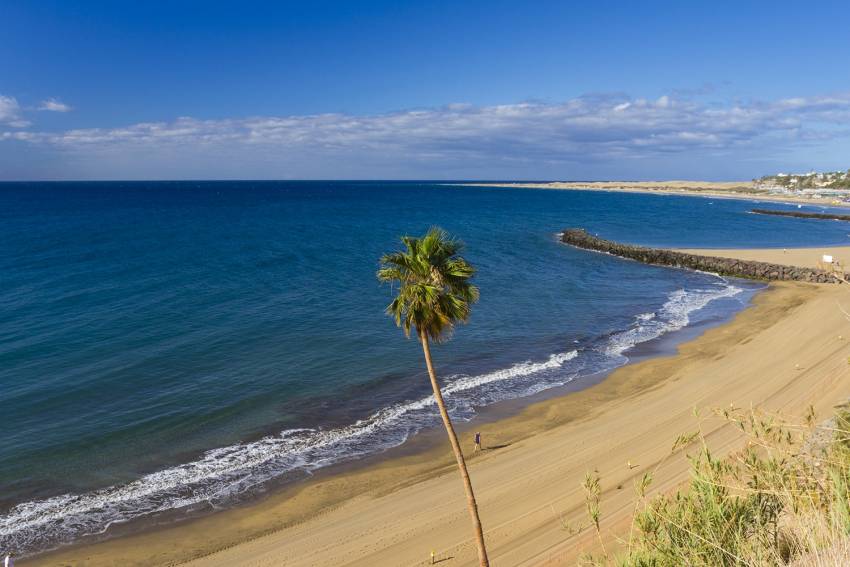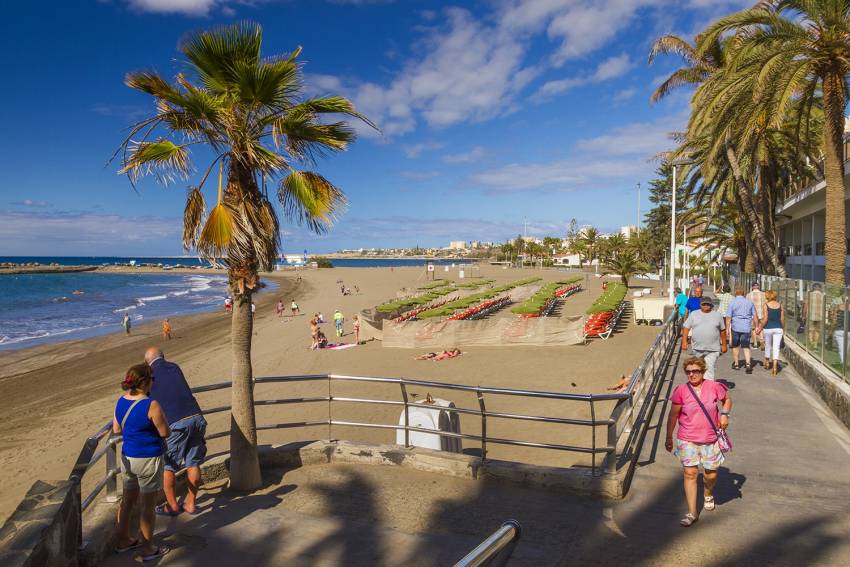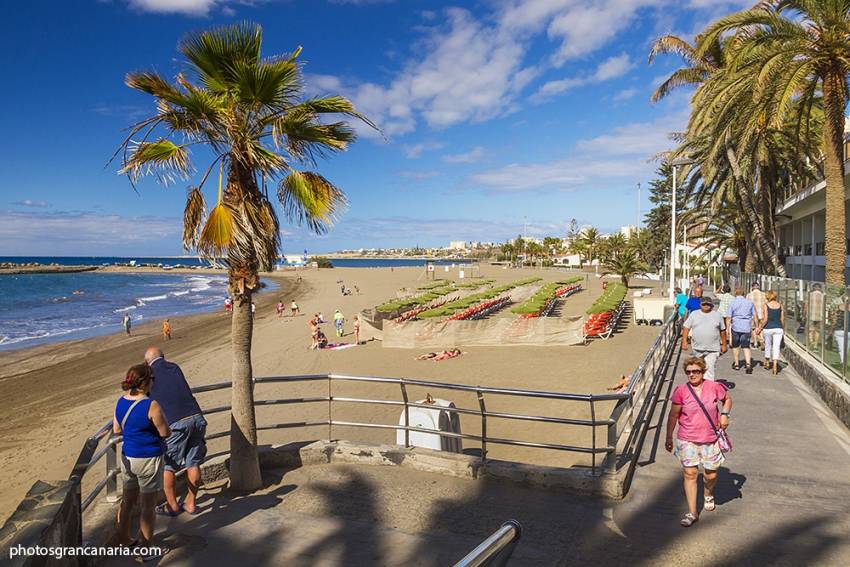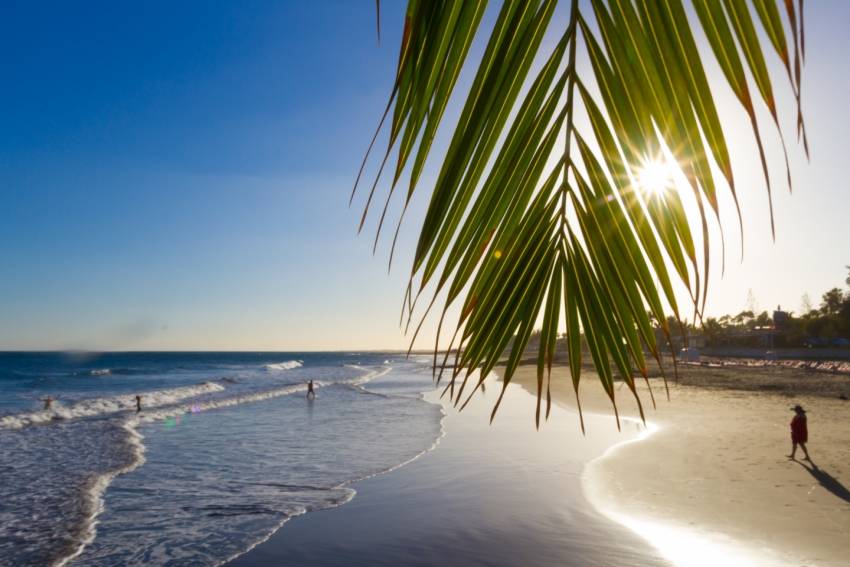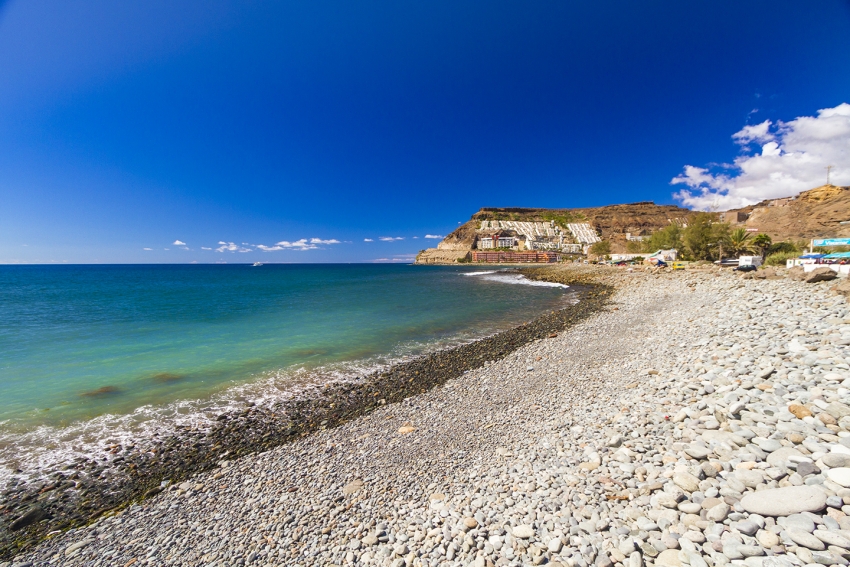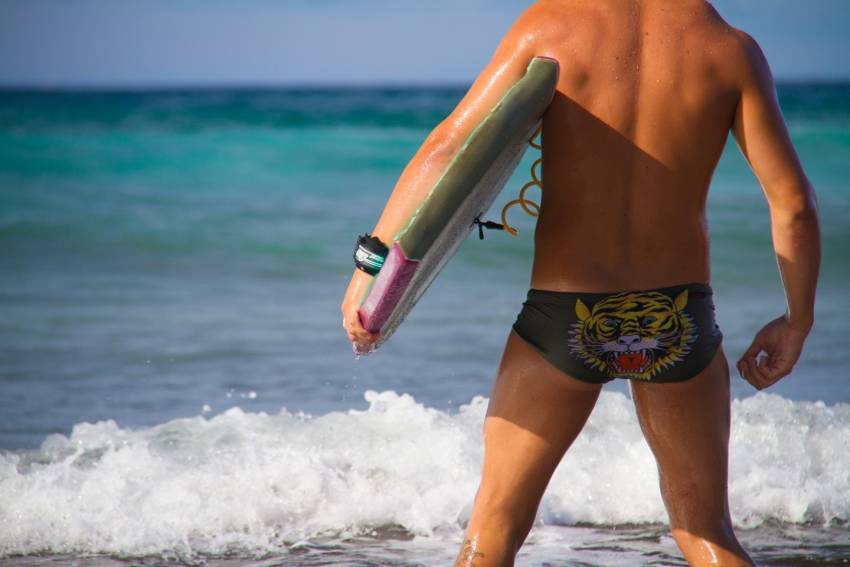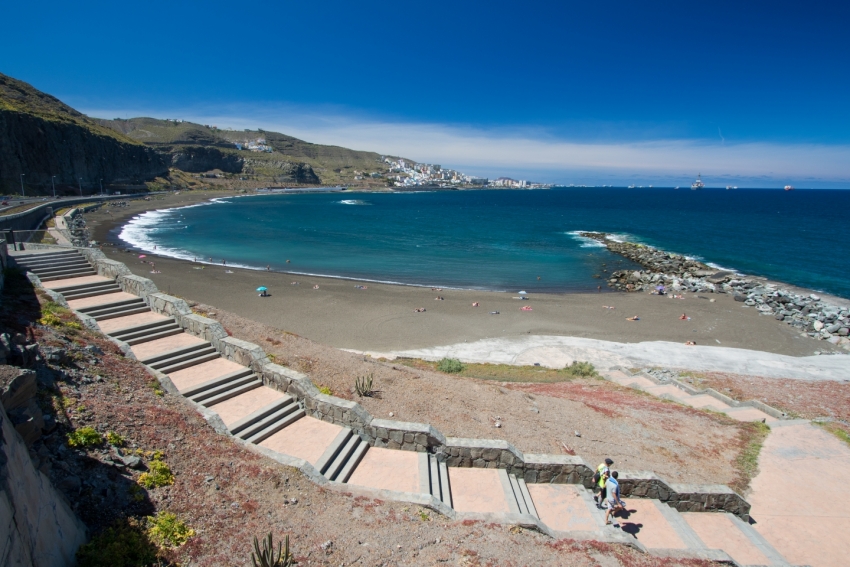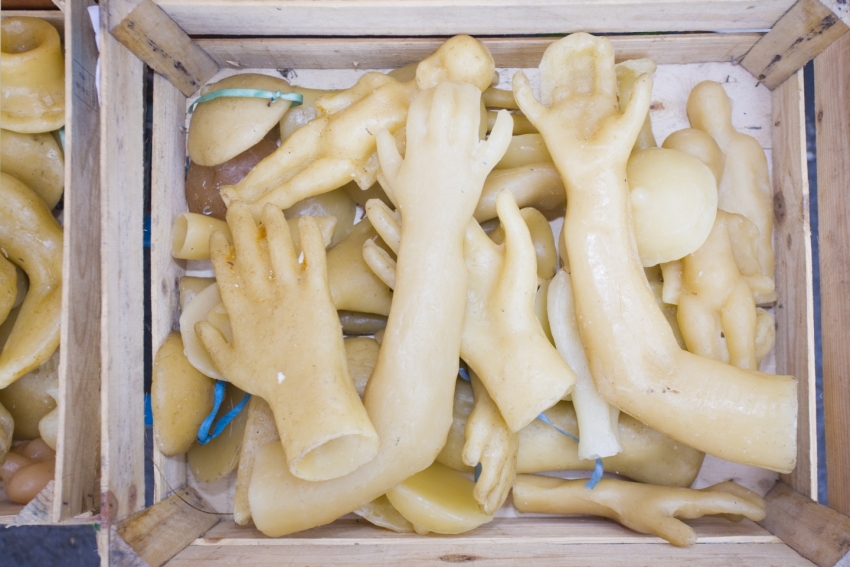El Pajar: Great Beach With Its Own Cement Factory
El Pajar village is literally in the shadow of Gran Canaria's cement plant but once you're on the sand you can't see the factory and the little golden beach is calm and pretty.
Las Marañuelas: South Gran Canaria's Local Beach At Arguineguín
While Puerto Rio and Playa del Inglés hardly existed before tourism, Arguineguín has always been a local town first and destination second. It's Las Marañuelas beach is the only easily-accessible one in south Gran Canaria with a real local feel.
La Lajilla: Arguineguin's Little Secret Beach
Arguineguín's Scandinavian winter residents hang out La Lajilla beach and natural swimming pool and are quite happy that nobody else knows where it is.
Pebbles and Peace at Gran Canaria's Playa del Aguila
Playa del Aguila is a long way from most people's idea of a south Gran Canaria beach: quiet, pebbly and almost completely local. And that's how its fans want it to stay.
Tiritaña Beach: South Gran Canaria's Pristine Cove
Tiritaña beach is like a mini version of Güi Güi; you get the hike through a pristine valley and the deserted beach at the end, but it's all just 15 minutes from the road.
Sunshine and Seafood at Puerto de Mogán Beach
Puerto de Mogán beach is as calm and sunny as it gets. With golden sand, a strip of bars and restaurants right by the sand and all the charm of Puerto Mogán marina right next door, it's a favourite for locals and visitors.
Don't Go To Horrible Patalavaca Beach (We're Joking: It's Great)
Patalavaca beach must be horrible. That's why nobody has ever heard of it and nobody goes to it. Except that it isn't. It's one of south Gran Canaria's best beaches.
Ten Fascinating Facts You Never Knew About Las Canteras Beach
Las Canteras beach has many claims to fame, but most people don't get past the big one: It's the best city beach in the world. But there's more to Las Canteras than sun, sand and palm trees. Here's ten fascinating facts about Las Palmas' jewel in the crown that most people don't know.
Las Canteras Beach: The Best City Beach In The World?
Some people say that Las Canteras is one of the top city beaches in Europe. We say it's number one. In fact, we'll go further and say that Las Canteras deserves to be at the top of any "best city beaches in the world" list.
Gran Canaria Wellness: Seven Reasons Why The Beach Is Good For You
Watch Canarians on the beach and you'll see that they do something odd. They coat themselves in beach sand and rub their skin vigorously: They're not crazy but know about one of the ocean's secrets. Wet beach sand, coated with sea salt and minerals, is great for your skin.
Faneroque Beach: Gran Canaria's Least Visited Beach
Faneroque beach makes the more famous GüiGüi beach feel like Puerto Rico on a busy Sunday afternoon. If you make it, and few do, you'll have it all to yourself except for the rusty bulldozer.
Popular Pebbles At Puerto de las Nieves
Puerto de las Nieves in north-west Gran Canaria is more famous for its seafood than its beach. A shame, as few realise that the area gets some of the best weather on the island and that PDLN beach is a calm, sunny haven with fishing boats on the pebbles rather than sun loungers.
Playa Pirata: Gran Canaria's Pirate Beach
Right on the bounday between San Agustín and Bahia Feliz, this little beach at the base of a cliff is called Pirate Beach but nobody knows why.
El Cochino Beach
Why it's called Pig Beach we'll never know but El Cochino is a great alternative to the crowds of Playa del Inglés beach right next door.
Las Burras beach
Las Burras beach is the most local of the golden sand beaches in south Gran Canaria and only gets busy at weekends and during school holidays.
South Gran Canaria’s Eight Most Underrated Golden Sand Beaches
South Gran Canaria's popular beaches are packed every day but there are others that, for one reason or another, don't get the same attention. Here's our list of the area's most underrated beaches and why they deserve a visit.
El Cochino
Not one but three small beaches just east of Playa del Ingles that are so underrated that nobody knows their names. Known colectively as El Cochino (Pig Beach) they are calm, sunny and rarely crowded.
The El Cochino beaches are less windy that Playa del Ingles and Maspalomas and sheltered from the waves. Great for families and people who find the dunes a bit too big and a bit too naked.
Patalavaca
It’s small, it’s sandy and it’s always half empty. Patalavaca beach has the warm water and the sunshine of Anfi and Amadores but doesn’t get crowds: Perhaps it’s because you can’t see if from the road, or because you have to walk through a tunnel to get to the sand. Whatever the reason Patalavaca makes it onto our underrated list because it’s a great little beach with seafood restaurants, sun loungers and plenty of space.
Patalavaca is between Arguineguín and Anfi. Access is via the storm drain tunnel under the road. You can also walk to Patalavaca along the coast path from Anfi.
San Agustín
San Agustin resort was the first in south Gran Canaria has faded into semi-obscurity despite its golden beach and loyal hard-core of Scandinavian and German fans: We suspect that they've deliberately taken it off the tourist map by buying all the available property.
The beach is fantastic and rarely crowded. For families with older kids it's great as there's no strong current but often waves to play in. There’s plenty of places to eat near the golden sand and you can even walk to San Agustín beach from Playa del Inglés.
Medio Almud
This is where nudists go when they get sick of the crowds on Maspalomas beach but don't fancy trudging down the dune at Montaña de Arena. It’s low key in the extreme with no facilities but does have a road right down to the start of the beach.
While Medio Almud is more pebbles than sand you can always find a sandy place to put a towel. It's best to leave the big camera at home: Local nudists don’t appreciate snap-happy tourists waving their lenses around.
Pasito Blanco
There’s a beach at Pasito Blanco?
Yes, although getting to it is tricky as you have to park outside the private marina and walk in, or hike down from the road to Meloneras.
The beach is a mixture of golden sand and pebbles and does get crowded with locals in the summer. However, on weekdays it’s a gorgeous, quiet spot and there’s great snorkelling just offshore.
There's no facilities, although you can nip into the marina to the supermarket.
Las Burras
This golden sand beach sheltered by a groyne is where the locals go for a south Gran Canaria beach day. It's between between El Cochino and San Agustin beaches along the coastal walk and has a couple of places to eat. The best bit is at the sheltered San Agustín end by the palm trees as the open end gets windy.
Montaña de Arena
South Gran Canaria's long-standing nudist and hippie hangout is a narrow beach at the base of a giant sand dune between Pasito Blanco and Arguineguin. Access is via tracks and the beach is a 10 minute walk from the GC 500 road.
Take supplies as there are no facilities except for the occassional drinks man.
The locals are happy to share their beach with tourists but some of them object to cameras and video cameras.
While Montaña de Arena is currently pristine the area between the beach and the road is set for development. What that means for the beach itself nobody knows. Enjoy it as it is now while you can.
Puerto Rico beach
It might seem ridiculous to call one of Gran Canaria’s most popular beaches underrated but Puerto Rico gets a bad rap. Artificial, packed with sun loungers and unashamedly resorty it may be, but PR beach is still a cracking place to spend a day in the sun. Ignore the sand snobs and give it a go.
San Agustín Beach
Golden San Agustín beach somehow get's forgotten by the crowds heading for Playa del Inglés and Maspalomas and that's no bad thing. For a resort beach is quiet and laid back and there's plenty of places to eat and drink close by.
Gran Canaria Beaches: All Change at Tauro
Tauro beach is Gran Canaria's lazy Sunday chill-out beach for people old enough to remember the resorts going up. They gather at weekends to listen to proper music and drink the island dry. With a long pebble beach, several ramshackle bars and a motely colection of decaying houses, Tauro is the anti-Amadores. For now!
Gran Canaria Beach Guide: Recognising a Local Beach
Only a few of Gran Canaria's 100 beaches are touristy. The rest, spread out around the coast, attract a local crowd and have a different vibe: Canarians will pay for seafood but not for sun loungers. If you want to spend time on a Canarian beach, something we wholeheartedly recommend, then use these tips to judge if you have found your spot.
Seashells and Surfers at La Laja Beach in Las Palmas
Drive into Las Palmas along the coast road from the airport and you can't miss La Laja beach and its mob of seagulls. While everybody sees it, only boogie boarders and locals appreciate it.
Gran Canaria Info recommends:
- Default
- Title
- Date
- Random

